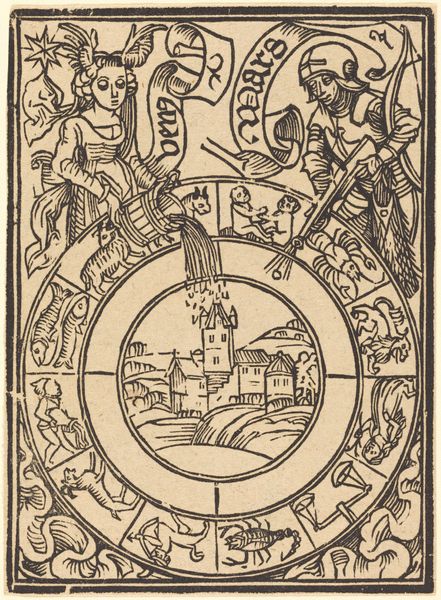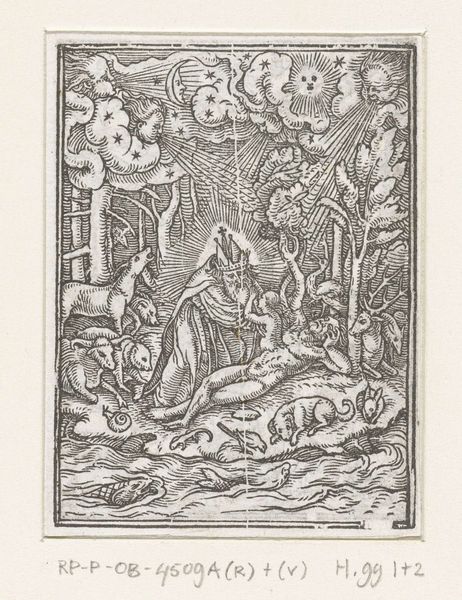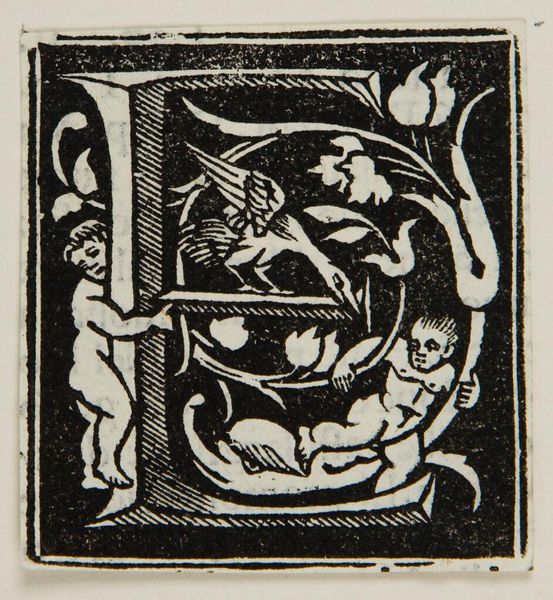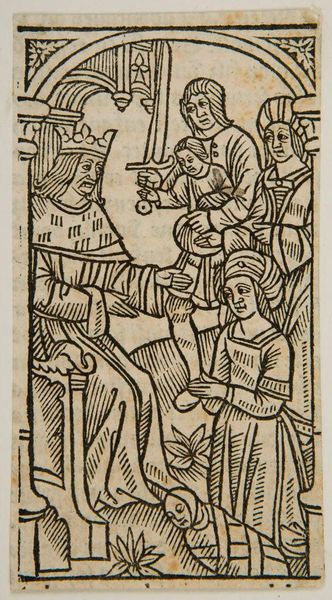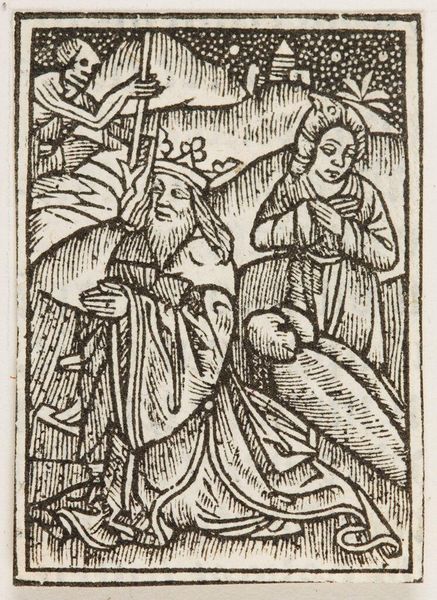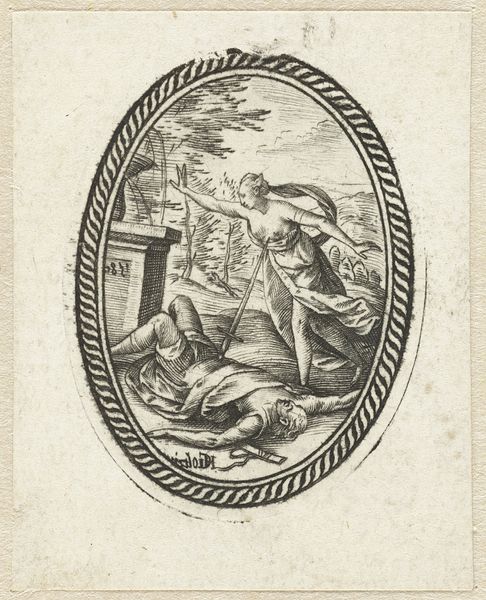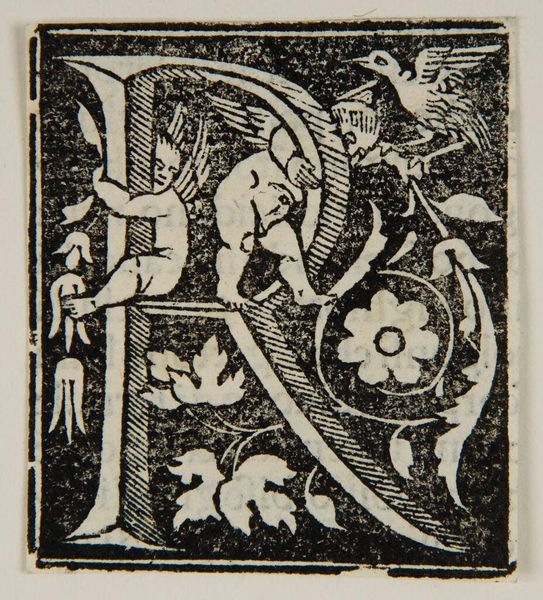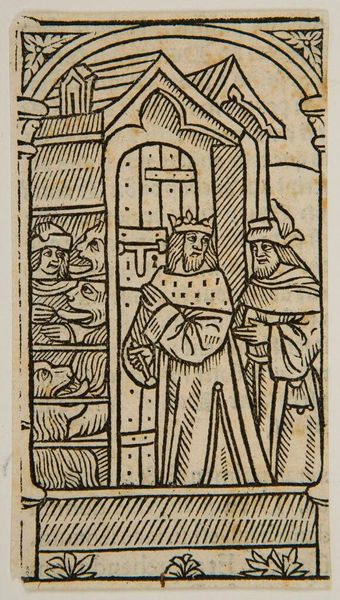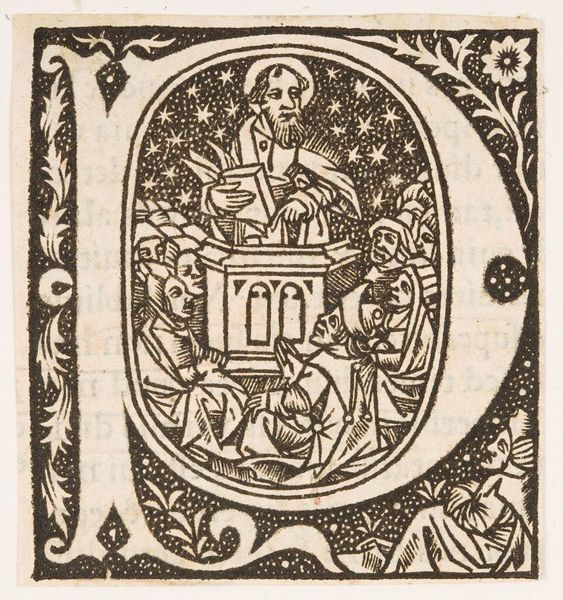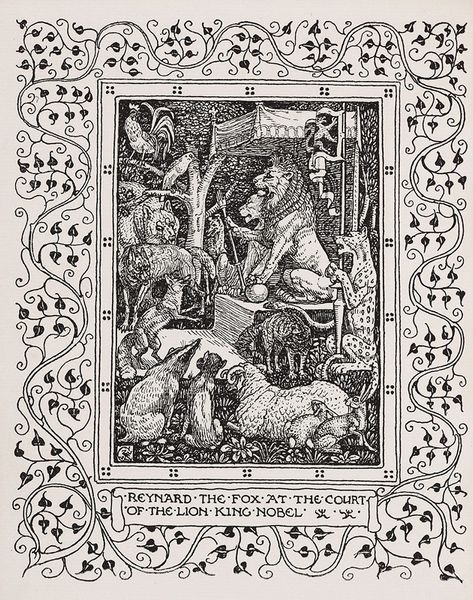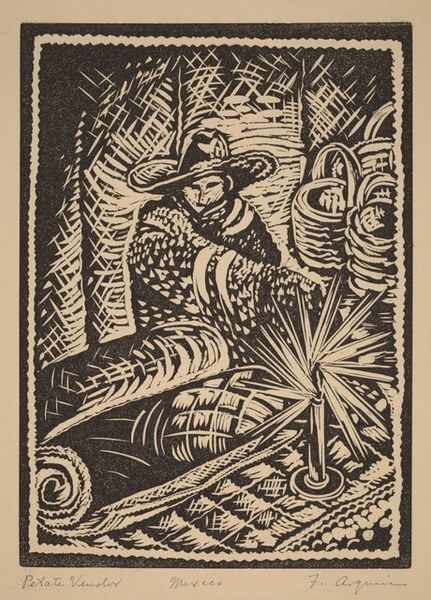
drawing, graphic-art, print, woodcut
#
portrait
#
drawing
#
graphic-art
# print
#
old engraving style
#
landscape
#
woodcut
#
pen work
#
sketchbook drawing
Copyright: Public domain
Curator: "Ex Libris," a woodcut print by Francis Davis Millet, presents a vignette of an artist at work, nestled within a framework reminiscent of classical architecture. It immediately strikes me as quite charming, almost folk-arty in its execution, despite the presence of an American flag. Editor: Charming is one word for it. I see something far more complex, this piece acts as a visual statement, a subtle yet pointed assertion of Millet's artistic identity within the broader context of late 19th-century American art. Consider how the "Ex Libris"—essentially a bookplate— functions as both a declaration of ownership and a symbol of intellectual and cultural positioning. Curator: The print is fairly small, yet the textures and the subject—an artist painting a landscape with houses and flag, rendered in black and white—gives it a surprisingly detailed appearance. The use of woodcut gives it that immediate sense of labor, the deliberate carving, but that choice situates it in this lineage of printmaking and book production too. Editor: Absolutely, that artist at his easel, under the banner of American identity, speaks to the construction of a national artistic voice and to the role of art in shaping cultural narratives. There's an underlying commentary here. Whose stories get told, who gets to represent the nation? Look at the domesticity in the image, it looks very similar to his representations of women at home painting decorative pottery that blurred those boundaries between fine art and the domestic arts. Curator: The graphic style lends itself beautifully to reproduction, right? The clean lines would translate exceptionally well across various formats. We should think about the means of distribution of such work – who was its intended audience, and how did Millet perceive its utility as both an aesthetic object and a marker of cultural value? Editor: Exactly! Millet, as both artist and social figure, becomes inseparable from the very fabric of cultural exchange within his era. But look again. This isn’t merely an artist making a statement, it is one of inclusion and celebration of an integrated American identity and pride by literally representing himself. It is about identity, access and creative autonomy in a time when such representation wasn’t universally granted. Curator: Seeing how Millet actively chose the material of a print, thinking how many copies he could create and give to others... That definitely challenges the hierarchy separating high art from accessible printmaking and challenges us to expand how we frame that question today. Editor: Yes, let's move beyond art as just aesthetic object and towards understanding the power of visual statements to influence ideologies. Understanding those choices allows us to deconstruct larger systems of power and representation.
Comments
No comments
Be the first to comment and join the conversation on the ultimate creative platform.
